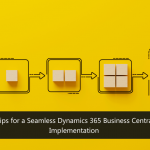
It may seem almost counter-intuitive that any cloud software would be difficult to implement. But Dynamics 365, thanks to ready-to-go templates and a migration Wizard, can be deployed in a matter of days.
On the other hand, cloud-based NetSuite can take “months to deploy,” and require added IT resources for customization, even though the platform uses a proprietary tool to accommodate this process. Comparatively, Dynamics 365 for Financials can bring in data from Excel, QuickBooks—and even from legacy ERP platforms.
According to Forbes, Dynamics 365 CRM, a part of the Microsoft stack hosted in the Azure cloud, is a true driver of “business transformation:”
“Business transformation describes the operational steps a firm takes to apply modern connected web, cloud, mobile, social, data analytics etc. technologies to do what it used to do before, but in a new faster and more efficient way.”
Indeed, and if that definition means doing things in a “faster and more efficient way,” then SaaS platform blows past NetSuite’s capabilities in many instances when comparing Dynamics 365 vs. NetSuite.
For one, multi-tasking with Netsuite can mean opening another application for customer info…or to start a quote or create a document. But Dynamics 365 users can not only attend to their clients (or vendors) and create quotes, process orders and send them on. All, within the Outlook Inbox…without leaving, or toggling among an array of applications.
What’s more, when it comes to attaching an electronic image—or entering transactions—Netsuite users do so manually.
‘Optical Character Recognition‘ is part of the Dynamics 365 design that scans and extracts those incoming docs automatically.
Contact us to learn more about the Dynamics 365 Difference.





